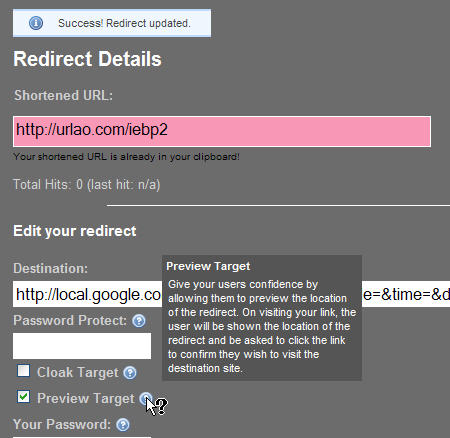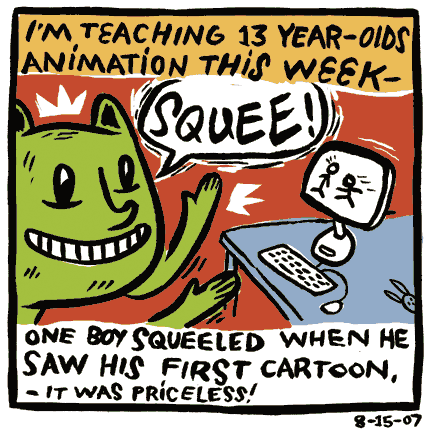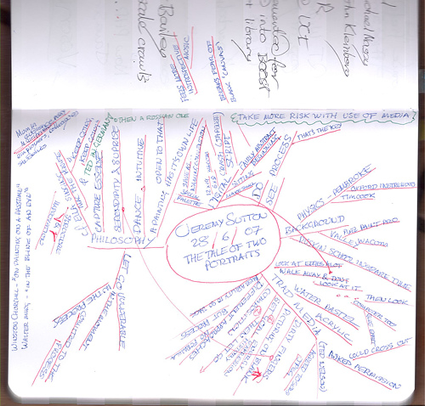Like everything else, short URLs follow the rules of supply and demand. My first internet business, in the mid-1990’s, had a four-character dot-com domain name. Back then this was good but not extraordinary. Now the dot-com space is so crowded that many start-ups look like they were named by dipping a spoon into alphabet soup. Luckily there are short URL services — most famously ShortURL.com. [I was thinking of TinyURL.com, the clear winner of the two in terms of Alexa’s Daily Reach metric.]
These businesses take the sting out of a rangy line of URL characters, while helping to avoid truncation (in emails) and misspellings (when speaking the address over the phone).
As a market leader, TinyURL offers a ton of features. Maybe too many. An upstart I’ve just learned about (thank you Steve Purkiss of ProjectStars) will give this status quo provider a run for its money. For this month’s One Positive Day, consider what URLao.com is doing right.
I love URLao’s simple, clean, Web 2.0 interface. They get you started quickly and pull you in with simple explanations of their best features. Here is the language they use for them:
- Private Redirect
- Ensure your privacy by requiring users to enter this password before being taken to the destination.
- Enable Cloaking
- This option hides your target URL — when users visit your link, they will only see your shortened URL in the address bar of the browser.
- Preview Target
- Give your users confidence by allowing them to preview the location of the redirect. On visiting your link, the user will be shown the location of the redirect and be asked to click the link or to confirm they wish to visit the destination site.
Notice the number of features is short. Just three. It’s a wise move for an upstart player in this category … promise a simpler yet improved experience.

Notice the benefits-heavy descriptions. This is even smarter. I used the last of these features when I created this short, clear URL to go to a Google Maps location of our parent company (and the home of ec-connection): www.URLao.com/FindNS. It’s a shortened version of this ungainly URL:
http://local.google.com/maps?f=q&hl=en&geocode=&time=&date=&ttype=&q=nelson+ schmidt,+milwaukee,+wi&ie=UTF8&ll=43.043614,-87.899938&spn=0.009158,0.021114 &z=15&iwloc=A&om=1
There are other features you should investigate, such as tracking each short URL’s use. I’ve often wondered how I could easily track how many people in a short list of email recipients actually click through to the links I’ve provided. This gives me that power, while ensuring that none of the URLs are broken in the process of opening, replying or forwarding the email.
As with so many other start-ups, this one offers its services for free. That means you definitely do not want to use it for mission-critical work, or anything where online security is an issue. But for quick, smart creation and monitoring of customized URLs, I have yet to find a service better than this one.


 This week my team is embarking upon yet another “namestorming” exercise, for yet another client whose brand name will be inextricably tied to their domain name. Once again, the process won’t be pretty. It will require lists of hundreds of word combinations. There will be disappointing
This week my team is embarking upon yet another “namestorming” exercise, for yet another client whose brand name will be inextricably tied to their domain name. Once again, the process won’t be pretty. It will require lists of hundreds of word combinations. There will be disappointing